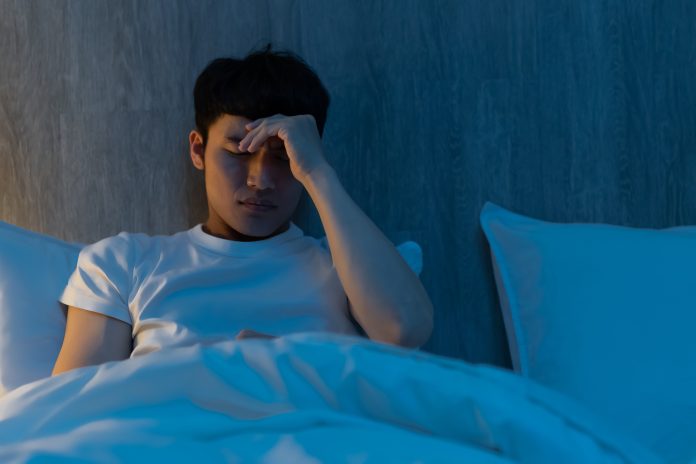
Migraine is one of the most common neurological disorders and one of the most ignored. With the word “headache” in the definition, many people overlook migraines as just another headache. But while tension headaches rarely interfere with daily life, migraines are a different animal. Thomas Bravo, MD, headache and neurology specialist at Loma Linda University Health, points out the differences between headaches and migraines, and offers tips on how to manage migraines.
Am I having a migraine?
While headache is a symptom experienced with many conditions, migraine headaches interfere with everyday life. These painful headaches manifest with a throbbing in the head, often accompanying nausea or queasiness, vomiting, and hypersensitivity to light and sound.
“We use the word headache in so many different ways,” Bravo says. “We often use it to describe something that’s bothersome. Migraine is more than a nuisance; this is something potentially disabling.”
An easy distinction between commonplace tension headaches and migraine headaches is how migraine tend to slow people down or impair them. Bravo says the extent to which a migraine affects a person’s life depends on their symptoms, which can last from hours to days if untreated.
If a person experiences headaches that do not respond to easily to over the counter treatment, occurring several times a month or more than once per week, or if they have headaches impacting daily life, it’s a good time to talk to a physician, especially if the headaches occur regularly.
For some, migraine can be triggered by external situations. Many patients say stress triggers migraine. Other triggers include poor sleep, fasting or diet, excess caffeine, and weather changes. While not much can be done about the weather, Bravo says establishing balance in your life can help with these triggers, and medication can provide relief as well.
What kind of migraine do I have?
People who experience migraine most days suffer from chronic migraine. These patients have better days and worse days, but many days with headaches.
A less common type of migraine, called migraine with aura, causes reversible neurologic symptoms, such as scintillating brightness or dark spot coming across the vision, numbing and tingling on one side of the body, fumbling speech, or rarely weakness on a side of the body. These symptoms, called aura, manifest spontaneously, often at the beginning or before the headache and should resolve completely on their own.
“If someone has been diagnosed with migraine with aura, know these symptoms will pass on their own,” says Bravo. “Being in a comfortable place and having your headache medications on hand can help shorten the symptoms.”
The sensation and visual abnormalities of migraine can mimic the signs of a stroke, although they come on gradually compared to stroke symptoms. Bravo recommends knowing the BEFAST symptoms of a stroke and to contact Emergency Medical Services if you think you’re experiencing a stroke.
Who do migraines affect?
Bravo says anywhere between 12-15% of the US population have had migraine, making it one of the most common genetic disorders in neurology. Women are more likely to experience migraine in their adult years than men. No single genetic for migraine exists; however, migraine tend to run in families, although intensity varies from person to person. Some family members will experience a handful of attacks in their lifetime, while others will be regularly disabled by the attacks.
A common occurrence in the workplace, migraine debilitates people during their most productive years between the ages of 15 to 49 peaking between ages of 35 to 45, according to the World Health Organization (WHO). While migraine does not affect your longevity, it does continue throughout your life.
What can I do about migraine?
Migraine varies from person to person, generating the need for a personalized treatment plan. Many treatment options exist through lifestyle and medication.
Keeping a regular schedule helps treat your migraine, Bravo says. A regimented pattern of adequate sleep, healthy meals avoiding unhealthy extremes, regular exercise, and reasonably controlled stress will help manage migraines. Keep an eye on more disabling feelings of anxiety or depression as these can aggravate migraine and often pair with stress.
If finding a balanced lifestyle does not provide sufficient support, many medications are available. Bravo says many new treatments directly targeting migraine have been developed over the last four years. Some medications can halt a migraine attack, while other injections and medications take a preventative approach. Speak with your physician to see what treatment is ideal for your situation.
Bravo says the developments made over the course of his training and career give him hope for the future. While no cure exists for migraine yet, the amount of research and understanding already initiated has paid off with improved treatments for patients.
Suffering from migraine or some other neurologic issue? More tolerated and focused options are available to help treat people who deal with migraine. Find out more or schedule an appointment at the Loma Linda University Headache Center.

We understand how important it is to choose a chiropractor that is right for you. It is our belief that educating our patients is a very important part of the success we see in our offices.
